Visit Palais Garnier, Paris’ Opera House
The Palais Garnier Opera House (Opera Garnier) is one of the most unique places in Paris, France. A visit to the Paris Opera House for a show or a guided tour is one of the best things to do in Paris, so you cannot miss it! The Palais Garnier is located in Paris 9, not far from the Grands Boulevards or Place Vendôme.
The glamorous Opera Garnier was commissioned by Emperor Napoleon III as part of his project of reconstruction of Paris. To build the new Paris Opera House, a competition for the best design was conducted in 1860.
The competition winner was Charles Garnier, a young and unknown architect who presented a highly eclectic project borrowing elements from many historical sources.
The Opera Palais Garnier was completed in 1874 and today is considered a masterpiece of Neo-Baroque Architecture and one of the most beautiful places to visit in Paris. After a short introduction to the Palais Garnier history, how to visit, and what to see, we will tell you the most curious Palais Garnier facts.
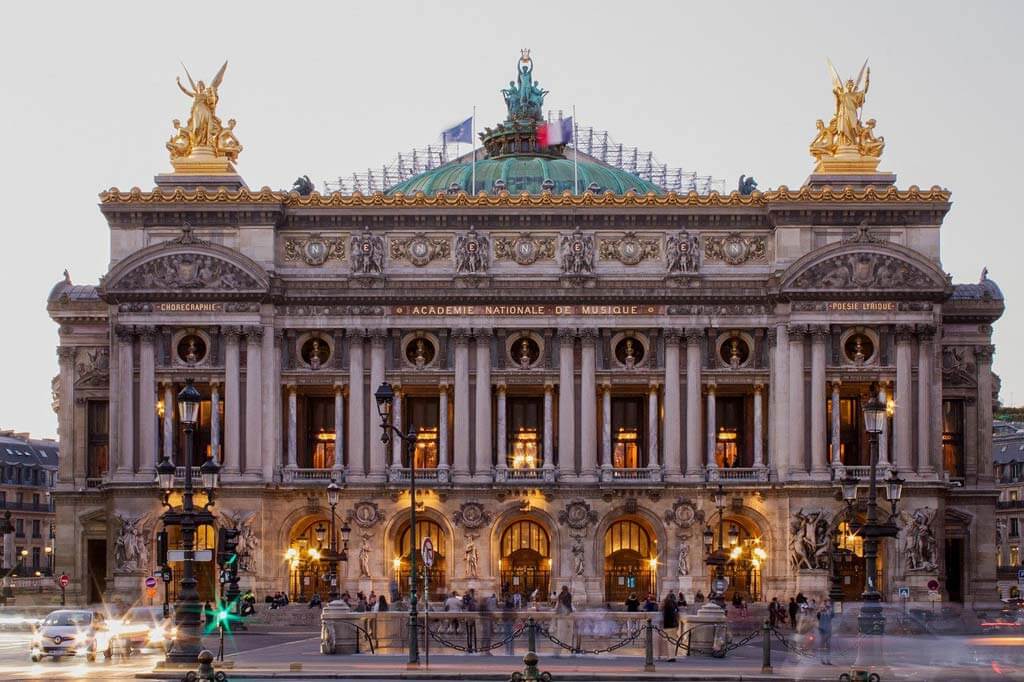
The Palais Garnier Opera House is one of Paris’s top sights to visit. We recommend visiting the Opera Garnier Paris in the following itineraries:

How to Visit the Opera Garnier in Paris
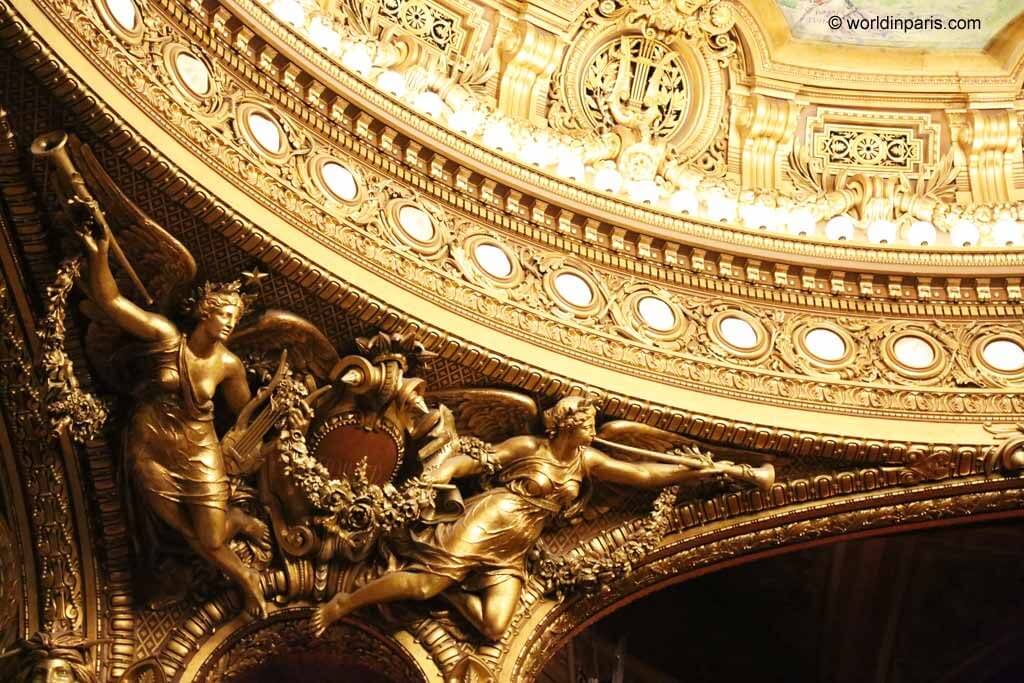
The best way to enjoy Opera Garnier is to attend a performance. The Paris Opera House proposes classical and contemporary ballets. If you want to attend a ballet at Palais Garnier, be sure to add something elegant to your Paris packing list!
GOOD TO KNOW: The Opera Paris has two sites: the Palais Garnier (Paris 9) and the Opera Bastille (Paris 10). The Opera Garnier is mainly used for ballets, while the Opera Bastille is the place to go to attend opera shows.
Take an Opera Garnier Tour
If you don’t plan to attend an opera or ballet during your trip to Paris, it is also possible to visit the Palais Garnier on a self-guided tour (with or without an audio guide) – Click here to book your Opera Garnier tour (self-guided)
Viator proposes an interesting 2-hour architecture walking tour with a guide that visits Opera Garnier and Galeries Lafayette, two of the city’s most magnificent buildings – Click here to book this Opera Garnier guided tour
If you are fascinated by the Phantom of the Opera, then book the Opera Garnier Mysteries guided tour. In addition to the history and Palais Garnier facts, this Opera Garnier tour puts more emphasis on the Phantom of the Opera story and other mysteries – Click here to book the Opera Garnier Mysteries guided tour
A Peek Inside Palais Garnier
The Palais Garnier Opera House is one of the most famous buildings in Paris. The Opéra Garnier is 154.9 meters long, 70.2 meters wide at the lateral galleries, and 101.2 meters wide at the east and west pavilions.
The Garnier Opera House has a 1,979 seating capacity, making it one of the world’s largest opera theaters!
The façade and the interior have no space without decoration and symbolize the opulence of the Second Empire. Charles Garnier, the architect, masterfully combined the colors and textures offered by different kinds of marble and stones, porphyry, gilded bronze, iron framework, and other materials.
If you plan to visit the Opera Garnier on a self-guided or guided tour, these are the three unmissable places inside Palais Garnier:
The Grand Escalier (Grand Staircase)
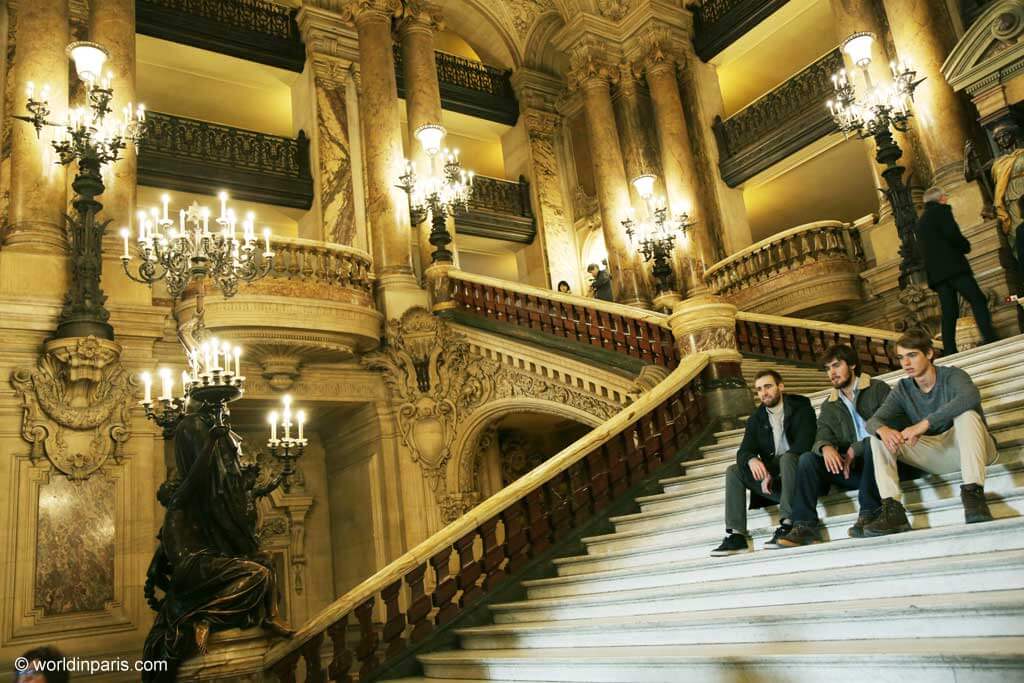
Opera Garnier’s Grand Escalier consists of a double staircase leading to the foyers of the theatre. Built with marbles of different colors, the Grand Escalier is covered by a magnificent thirty-meter-high vault. The pedestals of the staircase are decorated with female torchères who greet the spectators.
The Auditorium
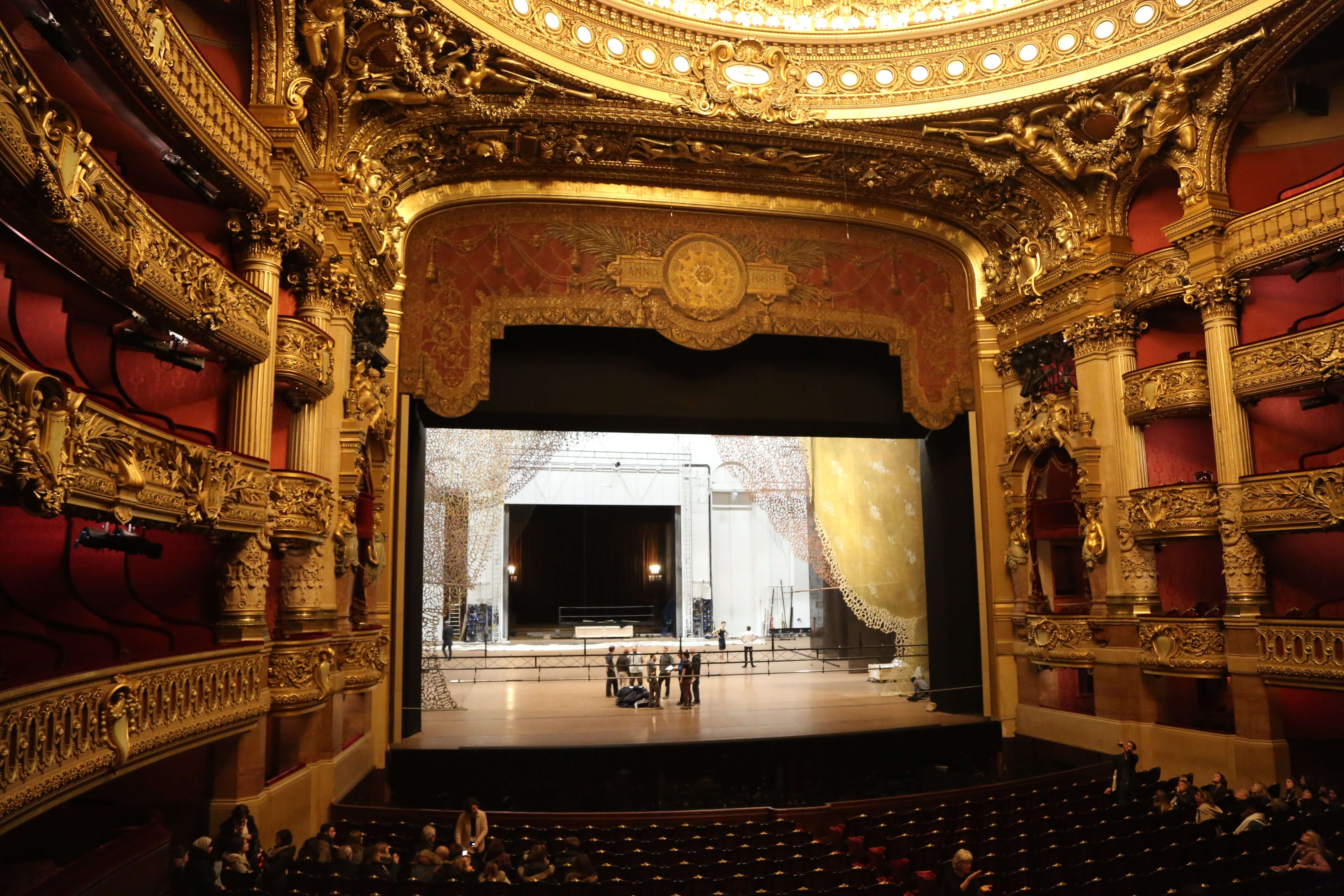
The Auditorium is the heart of the Opera Garnier, where the performances take place. The theater has a horseshoe shape, so-called for how the seats are arranged to see and be seen. The Auditorium is decorated with marble, stucco, velvet, and gilding.
The Grand Foyer
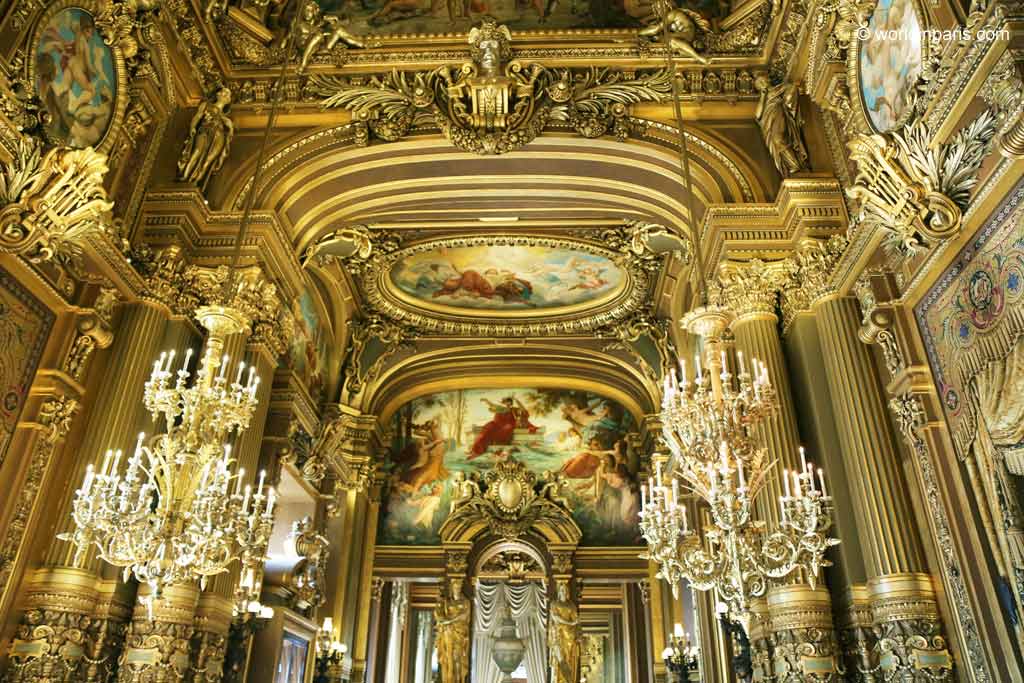
The Grand Foyer is a long room 18 meters high, 154 meters long, and 13 meters wide and has spectacular views of the Grand Staircase. This hall had an important role in Paris’ society as it was the perfect place to socialize while drinking champagne during the intermissions.
The Grand Foyer was inspired by the Hall of Mirrors inside the Palace of Versailles, with lots of natural light, gold, and mirrors. The lyre, God Apollo’s symbol, is the main decoration element, and you can find it everywhere in the room. Its ceiling represents various moments in the history of music.
15 Curious Palais Garnier Facts (Opera Garnier Facts)
The Palais Garnier history is very interesting. Amidst the countless anecdotes and legends surrounding its construction and first years, here are 15 facts about Palais Garnier – 15 fascinating things to know about the Garnier Opera House, Paris.
1. The Construction of the Opera Garnier was Inspired by a Tragic Event
The Opera Garnier history starts with a tragic event. In 1858, Emperor Napoleon III and his wife went to the Opera House that was at Rue Le Peletier. Just as the coach was parking, an explosion reached them. The imperial couple escaped unharmed, but eight of their men were killed, and several others were wounded.
After the failed assassination attempt on Napoleon III, the building of a new Opera House was declared in the public’s interest and for the safety of the head of state. The new Opera House was designed to have a private entrance and a special box where the emperor would sit.
2. A Special Request for the Avenue de l’Opéra
Haussmann’s renovation of Paris was a vast public works program commissioned by Emperor Napoleon III to bring air and light to the center of Paris. The Avenue de l’Opéra was not originally part of the plan but a personal request from the Emperor, who wanted a direct way to go to the Opera Garnier from his residence in the Tuileries Palace.
Charles Garnier, thrilled with the idea that such a beautiful avenue could enhance his monument, made an additional request: no trees were planted on this avenue so that nothing could disturb the view of the Opera House. That’s why, even today, the Avenue de l’Opéra has no trees.
3. The Palais Garnier Was a Costly Affair
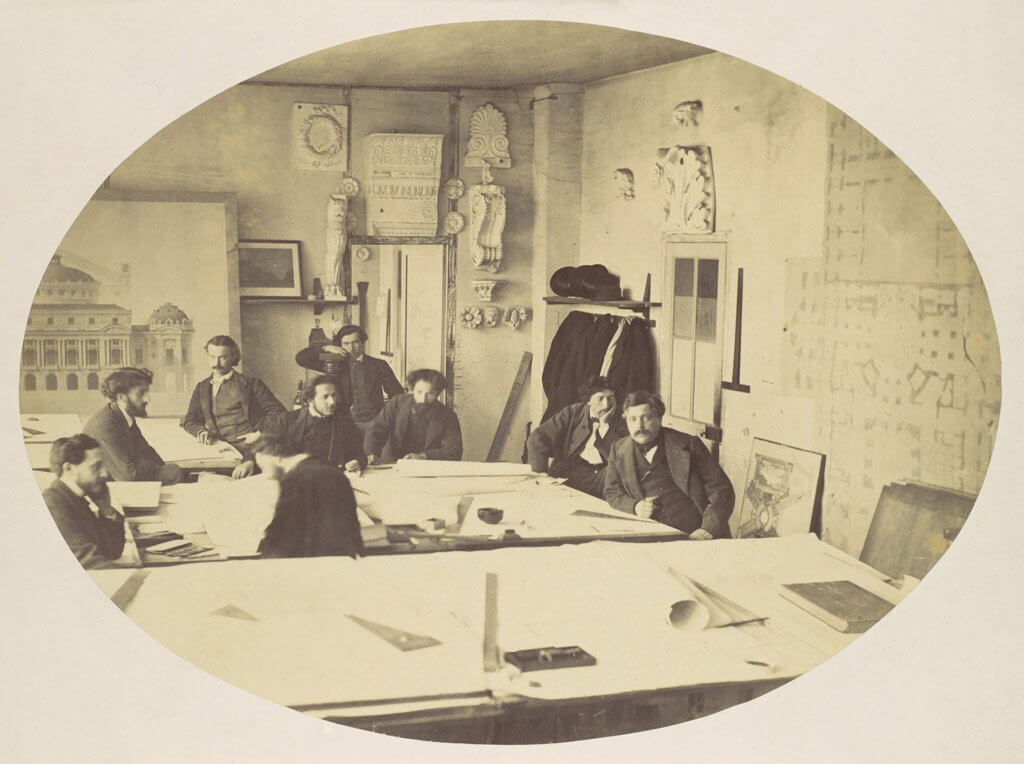
Though conceived as an opera house, Charles Garnier’s design has all the elements of a princely palace, hence the name ‘Palais Garnier.’ The construction of the Opera Garnier in Paris involved the country’s best artisans available, carefully selected by Charles Garnier himself, and the finest materials. The budget was estimated at over 20 million gold francs, making the Palais Garnier Paris the most expensive building of its time!
4. The Opera Garnier Served as a Military Camp
This is one of the lesser-known Opera Garnier facts. The Palais Garnier’s foundation stone was laid in 1862, but the work lasted more than 10 years because of budget restrictions, the Franco-Prussian War, and the Paris Commune.
During the Prussian War, the unfinished building was converted into a camp where they stored food and straws.
The construction of the building resumed shortly after the Opera Pelletier was destroyed by fire. The building’s main façade was inaugurated in 1867, but the entire opera house wasn’t opened to the public until 1875.
5. La Danse de Carpeaux Scandal
Charles Garnier considered his building a true work of art, and during the works, the façade was totally masked by scaffolding so as not to betray his artists’ work. To arouse the curiosity of Parisians, Garnier decided to unveil the façade in stages.
In 1869, the carved groups of the facade were discovered. The sculpture representing a group of women joyfully whirling around the Dance Genius (La Danse de Carpeaux by Jean-Baptiste Carpeaux) caused a scandal. How could Garnier represent naked women (and so real) on a public monument?
On the night of 26 August 1869, a bottle of ink was thrown against the sculpture group.
Today, visitors can see a copy of this sculpture group; the original is displayed at the Orsay Museum.
6. The Palais Garnier is the First Signed Building
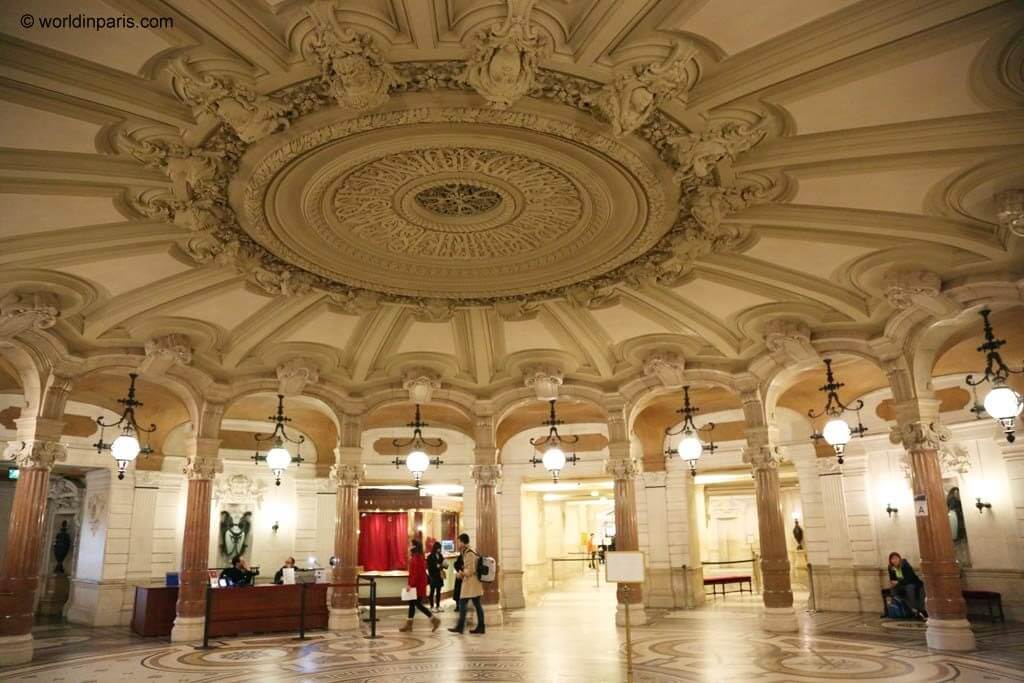
The guided tour starts at Rotonde des Abonnées, a circular vestibule that was used to accommodate spectators arriving by coach. This is a space with a rather dark atmosphere. Indeed, Charles Garnier wanted to give the spectator the impression of entering a cave before being dazzled by the Grand Escalier and other features in the theatre.
On the vestibule’s ceiling, you can see Charles Garnier’s signature, and this is the first time in history that an architect puts his signature on a building!
7. An Ungrateful Inauguration
The list of Palais Garnier facts continues with the day of its inauguration. On 5 January 1875, the Opera was officially inaugurated with a lavish performance attended by Marshal MacMahon (the new chief of the French government), the Lord Mayor of London, and King Alfonso XII of Spain.
Napoleon III, exiled in England since 1871, died in 1873 without seeing the achievement of his work.
The new government in France wanted to erase all traces of the Second Empire. Thus, Charles Garnier was not invited to the inauguration and had to pay for his own place to participate in the show. So sad!
8. The Palais Garnier Opera House is Designed to Watch the Spectators
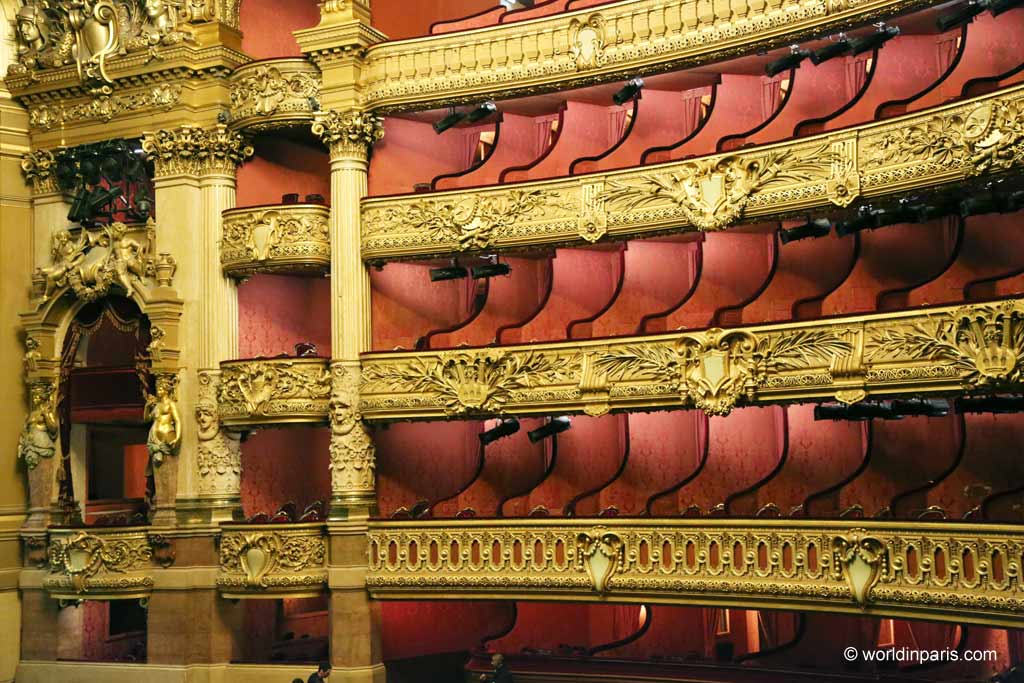
This is one of the most curious facts about Opera Garnier today, but it was nothing strange at the time when the Opera House was built. The Opera Garnier was not just about music but also a show of class, the perfect place to showcase its public.
The Grand Escalier was a triumphal entrance, with the perfect design to see and be seen. The Grand Staircase is in a great open hall, surrounded by balconies over four floors, perfect for observing and admiring the arrival of important guests. The steps are shallow, so when women would go upstairs, their ankles barely showed.
Once in the Auditorium, it is hard to miss the Emperor’s box, not placed in the middle of the hall for a perfect view and acoustic, but rather to the left, beside the front of the stage, visible from almost every seat on the Auditorium.
During the show, the lights remained lit in order to facilitate the popular activity of people-watching.
Finally, the Grand Foyer is the perfect place for socializing during the intermissions. Season ticket holders went to the opera 2-3 times a week, not because there were different performances or were opera fans, but to show off and socialize!
9. Being Surrounded by Banking Institutions Was Very Handy
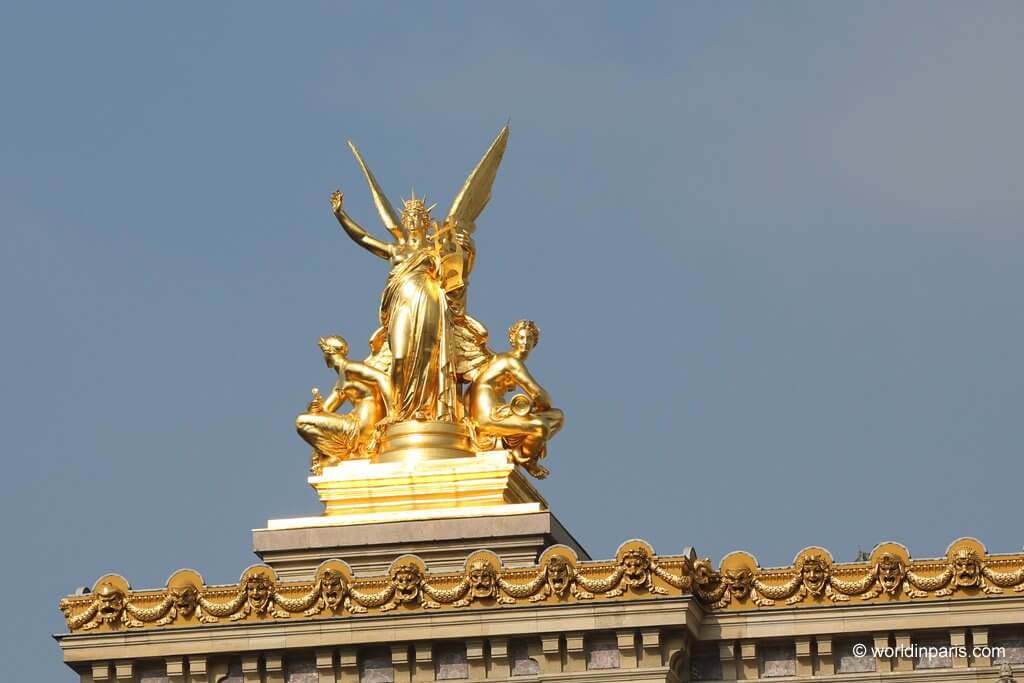
One of the most interesting Palais Garnier facts is related to its location. The Palais Garnier is located in Paris 9, a district that has always been home to the upper class and many banking institutions.
The perfect chance to be seen by the public, regular opera-goers would arrive with their best dresses and most precious jewels, usually stored in the banks’ coffers near the Garnier Opera House. As soon as the performance was finished, they would quickly return to the bank to safely store their precious jewels.
To be able to welcome their customers leaving the opera, the banks around Opera Garnier opened until late in the evening when there was an opera show.
10. The Opera Garnier Has a Mysterious Resident
The Phantom of the Opera novel, which was written by Gaston Leroux in 1910, is said to have been inspired by a true story event.
The novel tells the story of Erik, an eccentric, physically deformed genius who terrorizes the Opera Garnier in Paris. He builds his home in a fantastic palace in the middle of a subterranean lake, just beneath the Opera, and takes the love of his life, a beautiful soprano named Christine, under his wing.
Real stories and myths are blurred in Gaston Leroux’s novel, and until his very last day, he claimed that the Phantom of the Opera really existed.
For example, at the end of the 19th century, there was a mysterious individual who systematically demanded 20,000 francs every month from the board of directors and reserved every evening box no.5
Another tale is that a pianist known as Ernest was hurt and widowed in the fire that destroyed the Opera Pelletier in 1873. He went to the Opera Garnier for shelter and soon started haunting the corridors with an eerie cry.
Although nobody at Opera Garnier believes the Phantom of the Opera story, the staff won’t hesitate to blame the Phantom when something inexplicable happens …
11. Box Number 5 was (or still is?) the Phantom’s Private Box
One of the most famous facts about Palais Garnier is related to the Auditorium’s box number 5. Box number 5 was the Phantom’s box, and he demanded that every night the box was his alone, not shared with other spectators.
Today, box number 5 is sold out for every performance, and it seems to be a wonderful place to see the opera without being seen.
12. There Really is an Underground Lake
The Opera’s underground lake where Erik built his palace really exists, but it is not as atmospheric as Gaston Leroux described in his novel The Phantom of the Opera.
One of the reasons why the project took so long to be completed was the presence of a considerable amount of water in the soil. When workers attempted to lay the building’s concrete foundations, a seemingly endless flow of water bubbled up from the swampy, newly cleared ground, and no one could do anything to stem it.
After months of trying to pump out the excess water, Charles Garnier decided to incorporate a cistern into his design to redistribute the water and relieve the water pressure on the basement walls. The cistern, one of the hidden gems of underground Paris, still exists today, and it is used as a reservoir for firefighters in Paris. The lake is also the home of a family of carp.
When we did the guided tour, our guide told us that the tank’s weight also stabilizes the building. Some years ago, the Opera decided to empty the tank to clean it. During the process, the workers received a call from their boss who was in the Auditorium: they had to stop immediately emptying the tank because the building was moving!
Explore Opera Garnier’s Underground Lake with Google Curio-Cité
13. The Legendary Episode of the Fall of the Chandelier Really Happened
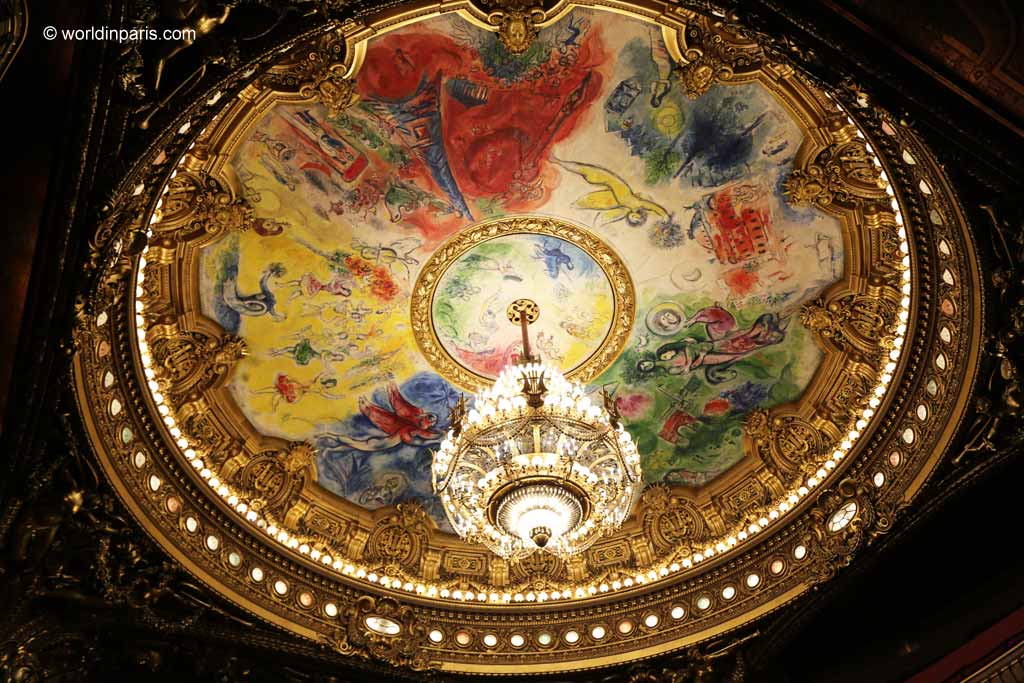
This is one of the most famous chapters of the history of Palais Garnier that Gaston Leroux also used in his novel. During one of The Phantom of the Opera’s most thrilling moments, the Phantom kills an audience member by causing the Grand Chandelier to fall during a performance. The confusing situation allows him to kidnap Christine to his underground palace.
The fall of the chandelier actually mirrors a real accident at the Opera Garnier in 1896, when one of the counterweights of the 7-tonne chandelier fell into the audience and killed one person.
When you visit Opera Garnier, don’t miss looking up in the Auditorium to admire the famous chandelier and the paintings on the ceiling, one of Marc Chagall’s masterworks!
14. The Opera Stage Can Fit the Arc de Triomphe!
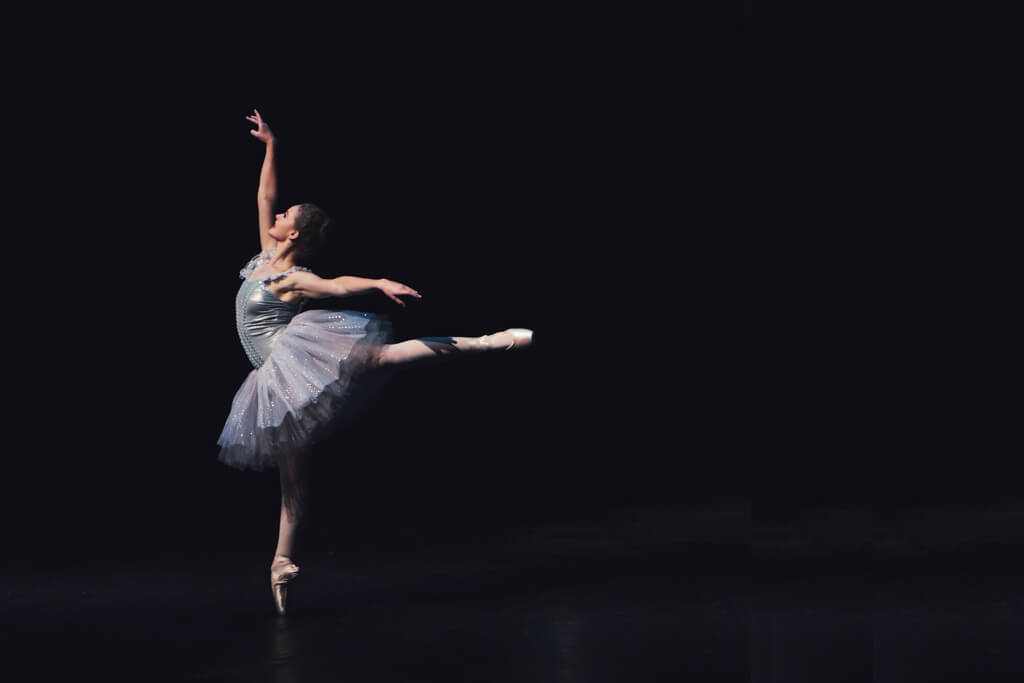
One of the fun Opera Garnier facts is the size of the building. The Palais Garnier’s vast stage is the largest in Europe, measuring 52 meters wide by 62 meters high, vast enough to fit the Arc de Triomphe!
Following a concept that already existed in other opera houses in Italy, Charles Garnier added a slight incline to the stage, allowing visitors to have a better view. With such incredible measures, the 5% incline means that the stage is one meter higher at the back than at the front. The ballet artists at the Opéra National de Paris are used to this incline, while it’s harder for other ballet dancers who perform here occasionally.
15. There Really Are Buried Phonographic Recordings
We finish this list of facts about Opera Garnier with the most incredible one. In The Phantom of the Opera novel, Gaston Leroux mentions the burying of phonographic recordings in the Opera Garnier’s cellars. He narrates that while the workmen in charge were preparing the cellar to store the recordings, they found a corpse identified as the Phantom’s.
Actually, this is a historical fact: in 1907, the Gramophone Company sealed 48 gramophone records of the greatest singers of the time in two containers and locked them in the opera house’s cellars, to be opened 100 years later. In 2007, the containers were opened, and the records were digitized by EMI Classics under the name of Les Urnes de l’Opéra. There is no record of finding a corpse, though.
And there you have it, the Palais Garnier history and most curious Opera Garnier facts & myths to make your visit more interesting!
Click here to read more Paris Attractions
Pin it now & read it later


